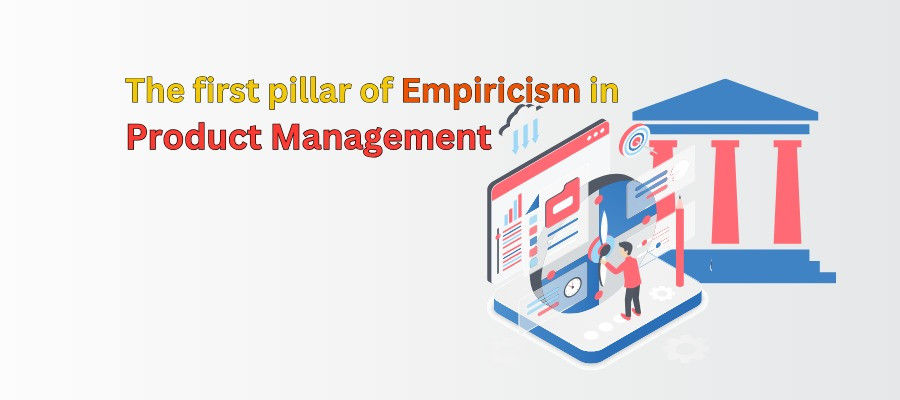Transparency: The First Pillar Of Empiricism In Product Management

Have you ever wondered what sets successful product management teams apart? What drives their ability to adapt, innovate, and consistently deliver value? The answer lies in embracing the foundational principles of Empiricism.
However, knowing the three principles isn’t enough for efficient product management. As a Product Owner, you must understand their significance. That’s why we bring you an exclusive series to discuss each pillar of Empiricism, beginning with “Transparency” as the first pillar. So, let’s start!
A Quick Recap About Empiricism And Its Three Pillars:
Let's first grasp the concept of Empiricism and its significance in Agile Product Management. Empiricism is a philosophical approach rooted in the idea that knowledge comes from experience and observation rather than theory or intuition. Empiricism forms the bedrock of Iterative and Incremental Development in Agile Methodologies like Scrum.
Three pillars uphold Empiricism in Agile:
1. Transparency: Ensuring that all process aspects are visible to those responsible for the outcome.
2. Inspection: Regularly inspect the progress and the product to detect variances and adapt accordingly.
3. Adaptation: Making adjustments based on the insights gained through inspection to optimize value delivery.
Each of these pillars is indispensable, but Transparency is the building block that enables practical Inspection and facilitates informed Adaptation in Agile Product Management. Let’s try to understand that in detail.
The Essence Of Transparency In Product Management:
Transparency in Product Management refers to making all relevant information accessible to stakeholders, team members, and customers. It encompasses sharing progress, challenges, goals, priorities, and decision-making processes without ambiguity or concealment. By fostering an environment of openness and honesty, Transparency lays the groundwork for collaboration, trust, and alignment across the product development lifecycle.
The Expected Product Management Outcome When Focusing on Transparency:
Embracing Transparency in Product Management yields a myriad of benefits that contribute to the overall success of the product and the team:
- Enhanced Collaboration: Transparency fosters a culture of collaboration where stakeholders and team members can openly share ideas, feedback, and concerns.
- Informed Decision-Making: By providing visibility into the project's status and progress, Transparency empowers stakeholders to make informed decisions and prioritize effectively.
- Increased Accountability: When information is transparently available, team members take ownership of their tasks and are more likely to be accountable for their contributions.
- Early Detection Of Errors: Transparent communication helps detect development and implementation risks at the beginning of product development. Developers can address them beforehand before they escalate.
- Improved Customer Satisfaction: Transparency builds customer trust by informing them about the product's development and aligning their expectations with reality.
How To Achieve Transparency In Product Management?
Achieving Transparency requires a concerted effort from Product Managers, Scrum Masters, and the Agile team. Here are some best practices to foster Transparency:
- Open Communication Channels: Establish open communication channels where team members can freely share information, updates, and concerns.
- Regular Reporting: Provide stakeholders with progress reports, status updates, and metrics to inform them about the project's trajectory.
- Visible Workspaces: Utilize visual tools like Kanban boards, task boards, and burn-down charts to make work progress and impediments visible to everyone.
- Transparent Backlog Management: Maintain a transparent backlog that clearly outlines priorities, User Stories, and Acceptance Criteria for all stakeholders to access.
- Honest Retrospectives: Conduct honest and constructive retrospectives to reflect on what went well, what didn't, and how to improve, fostering a culture of continuous learning and improvement.
- Feedback Loops: Encourage feedback from stakeholders and customers throughout the development process to ensure alignment and address concerns promptly.
- Shared Vision: Everyone must understand the project goals in clear terms. When the Product Owner directs the Product Vision, the team should also cater to a shared vision that outlines the desired outcomes for the product.
It’s Time To Bring Transparency In Agile Product Management!
Transparency, the first pillar of Empiricism, is an essential aspect of Product Management. The Product Owner himself cannot bring transparency if other team members don’t contribute. So, it’s a joint effort where every team member and business stakeholders agree to adapt, collaborate, and deliver value effectively.
By embracing Transparency as a guiding principle, Certified Scrum Product Owners can implement best practices to ensure open communication and visibility. So, how transparent is your Agile Product Management? Validate the current work culture and drive the project with complete transparency!
Reference:
https://www.scrum.org/resources/blog/three-pillars-empiricism-scrum
https://premieragile.com/the-three-pillars-of-empiricism/



